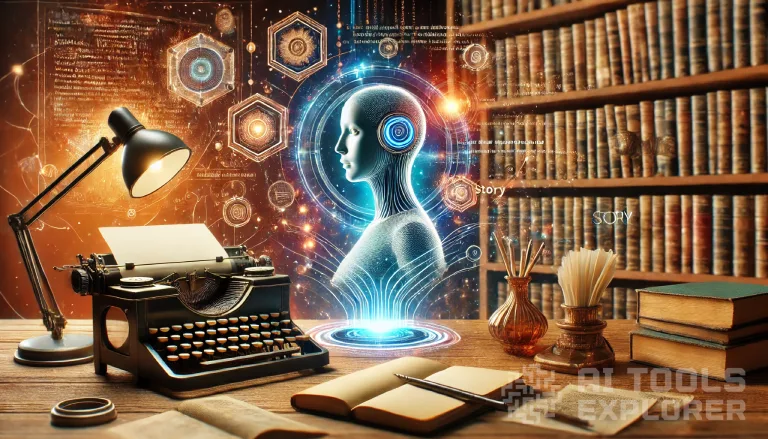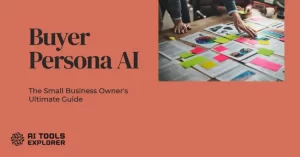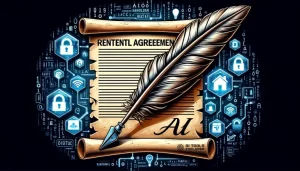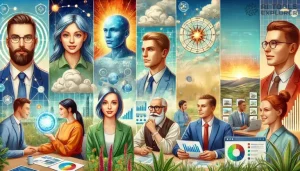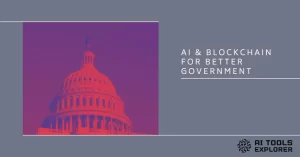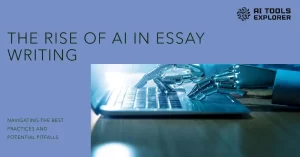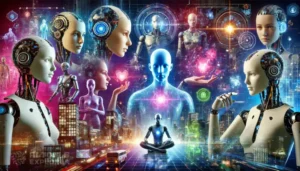Artificial intelligence is no longer just a subject of speculative fiction—it’s becoming a tool and collaborator in the creative process. While authors have long used their imaginations to explore the possibilities of AI, modern AI technologies are now actively shaping the way stories are conceived, written, and consumed.
Let’s explore how AI is influencing storytelling, from its role as a creative assistant to its ability to generate entirely original narratives.
AI as a Writing Assistant
“From brainstorming to proofreading.”
Modern AI tools like ChatGPT, Grammarly, and Sudowrite are helping authors refine their craft by assisting with brainstorming, editing, and idea generation. These tools can suggest plot twists, refine prose, and even create character dialogue.
- How It Shapes Storytelling:
- Speeds up the writing process by offering instant feedback and suggestions.
- Expands creative possibilities by introducing ideas or perspectives the author might not have considered.
- Examples in Action:
- Bestselling author Andy Weir (The Martian) has spoken about using AI-like tools for technical accuracy in his novels.
Featured AI Writing tools
AI-Generated Fiction
“Can a machine tell a compelling story?”
AI systems like OpenAI’s GPT-4 and Sudowrite have demonstrated the ability to generate original short stories, poems, and even full-length novels. These stories often borrow heavily from existing tropes and styles but can still surprise readers with their creativity.
- How It Shapes Storytelling:
- Lowers the barrier for new writers, allowing anyone to experiment with AI-generated drafts.
- Challenges traditional notions of authorship and originality.
- Notable Examples:
- 1 the Road, a novel co-written by an AI, mimics Jack Kerouac’s On the Road.
- AI-generated poetry anthologies, blending human and machine creativity.
Featured Storytelling AI tools
Collaborative AI Storytelling
“A partner, not a replacement.”
Some authors and creators see AI not as a rival but as a collaborator. In this dynamic, AI offers prompts, expands ideas, or fills in gaps in world-building, while the human author maintains creative control.
- How It Shapes Storytelling:
- Fosters a hybrid creative process that merges human intuition with AI’s computational prowess.
- Allows for rapid prototyping of complex worlds and narratives.
- Real-World Applications:
- Video game writers use AI to generate lore and side quests, such as in Dungeons & Dragons campaigns or RPGs.
- Comic book creators use AI art generators to visualize scenes and characters.
Personalized Storytelling Through AI
“Your story, your way.”
AI-powered platforms are offering personalized storytelling experiences tailored to individual preferences. From interactive novels to AI-driven chatbots, readers can now influence how a story unfolds in real time.
- How It Shapes Storytelling:
- Empowers audiences to become co-creators in their entertainment.
- Blurs the line between storytelling and gaming.
- Examples in Action:
- Replika, an AI chatbot, offers emotionally engaging conversations that feel like personalized stories.
- AI-driven choose-your-own-adventure apps that craft unique plots based on user choices.
Reviving Literary Legends
“Bringing the past to the present.”
AI tools have been used to mimic the voices of iconic authors, creating works in the style of literary greats. This raises questions about the ethics and potential of resurrecting long-dead voices.
- How It Shapes Storytelling:
- Provides fans with “new” works from their favorite authors.
- Allows authors to explore styles outside their own, inspired by literary giants.
- Examples in Action:
- OpenAI has generated poetry in the style of Shakespeare and Emily Dickinson.
- AI-generated “new chapters” of unfinished works, like Jane Austen novels.
Ethical and Creative Challenges
“When storytelling meets controversy.”
While AI has opened new doors, it has also sparked debates about creativity, intellectual property, and the role of the human author. Critics argue that AI-generated stories lack the depth and soul of human-written works.
- Challenges Faced:
- Originality: Can an AI truly create something “new,” or is it just remixing existing content?
- Authorship: Should AI-generated stories credit their programmers or users?
- Quality: Many argue that AI-generated works still feel formulaic and lack emotional resonance.
Check out our dedicated AI Ethics section for more on the subject.
AI in Visual Storytelling
“Art and words come together.”
In addition to text, AI is revolutionizing visual storytelling. Tools like MidJourney and Stable Diffusion allow authors to generate stunning artwork that complements their narratives, making their stories more immersive.
- How It Shapes Storytelling:
- Enables indie creators to produce high-quality book covers and illustrations.
- Inspires new genres of multimedia storytelling, blending prose with dynamic visuals.
- Examples in Action:
- Graphic novels co-created with AI, like The Fabulist.
AI’s Influence on Storytelling Themes
“Writing about AI, with AI.”
Authors are increasingly using AI as both a tool and a subject. Modern literature explores themes of machine learning, consciousness, and the ethics of AI, reflecting society’s evolving relationship with technology.
- Examples of AI-Driven Themes:
- The dangers of AI in Machines Like Me by Ian McEwan.
- The emotional depth of AI in Klara and the Sun by Kazuo Ishiguro.
- AI as a metaphor for humanity’s ambitions and fears in Children of Time by Adrian Tchaikovsky.
The Future of Storytelling is Here
AI’s impact on storytelling is undeniable. While it raises important ethical and creative questions, it also offers exciting opportunities for collaboration, innovation, and new forms of expression. As authors and AI continue to learn from each other, the future of storytelling may be more dynamic—and unpredictable—than ever.
What do you think? Will AI revolutionize storytelling or dilute its human essence?
